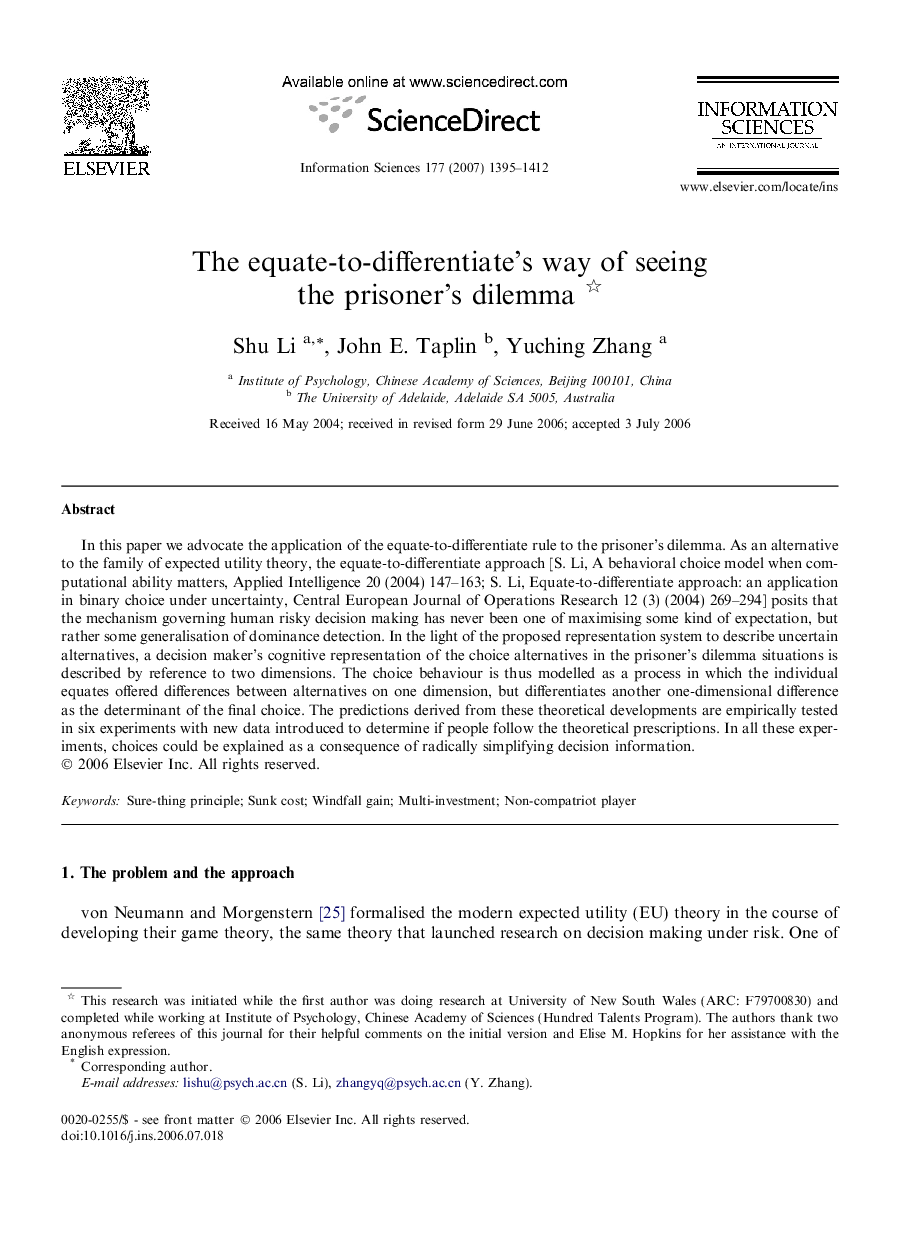| Article ID | Journal | Published Year | Pages | File Type |
|---|---|---|---|---|
| 396329 | Information Sciences | 2007 | 18 Pages |
In this paper we advocate the application of the equate-to-differentiate rule to the prisoner’s dilemma. As an alternative to the family of expected utility theory, the equate-to-differentiate approach [S. Li, A behavioral choice model when computational ability matters, Applied Intelligence 20 (2004) 147–163; S. Li, Equate-to-differentiate approach: an application in binary choice under uncertainty, Central European Journal of Operations Research 12 (3) (2004) 269–294] posits that the mechanism governing human risky decision making has never been one of maximising some kind of expectation, but rather some generalisation of dominance detection. In the light of the proposed representation system to describe uncertain alternatives, a decision maker’s cognitive representation of the choice alternatives in the prisoner’s dilemma situations is described by reference to two dimensions. The choice behaviour is thus modelled as a process in which the individual equates offered differences between alternatives on one dimension, but differentiates another one-dimensional difference as the determinant of the final choice. The predictions derived from these theoretical developments are empirically tested in six experiments with new data introduced to determine if people follow the theoretical prescriptions. In all these experiments, choices could be explained as a consequence of radically simplifying decision information.
